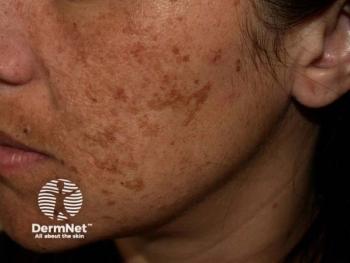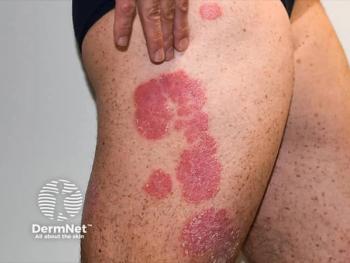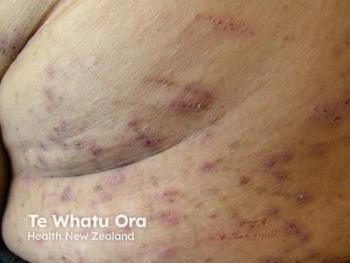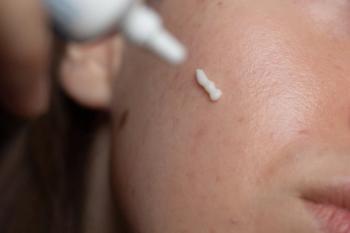
Burnout in Trainees Persists Despite Pandemic Lessons
Key Takeaways
- Burnout in medical trainees is multidimensional, with emotional exhaustion, depersonalization, and personal accomplishment affected by the COVID-19 pandemic.
- Specialty and geographic context significantly influence burnout levels, with emergency medicine trainees experiencing increased burnout during COVID-19.
Medical trainees face heightened burnout, especially in dermatology, due to COVID-19's impact on emotional exhaustion and personal accomplishment.
Burnout continues to be a pressing concern within medical training programs, and recent global challenges, most notably the COVID-19 pandemic, have further highlighted its complex, context-dependent nature.1 A new systematic review and meta-analysis of 245 studies encompassing over 48,000 postgraduate medical trainees (interns and residents) across 59 countries has examined burnout through the lens of the Maslach Burnout Inventory (MBI) subscales: emotional exhaustion (EE), depersonalization (DP), and personal accomplishment (PA).2 For dermatology educators and clinicians responsible for shaping the next generation of providers, these findings offer both insight and caution.
Burnout Dimensions and Pandemic Influence
Burnout is a multidimensional syndrome defined by the ICD-11 and MBI conceptualization as emotional exhaustion, depersonalization, and low personal accomplishment. The pooled data demonstrated that trainees across all specialties, including dermatology, deviated significantly from normative values on all 3 MBI dimensions:
- Emotional exhaustion: Elevated both pre- and during COVID-19 (gw = 0.205–0.262).
- Depersonalization: Elevated, but interestingly lower during COVID-19 (gw = 0.430) compared with pre-COVID (gw = 0.611).
- Personal accomplishment: Substantially lower during COVID (gw = −0.626) than pre-COVID (gw = −0.348).
These findings, while nuanced, are particularly relevant for dermatology, a specialty that often balances high patient volumes, academic rigor, and cosmetic or procedural subspecialization, each with distinct demands and expectations.
Specialty and Geographic Variability
Context emerged as a key moderator of burnout. Emergency medicine trainees experienced worsening burnout during COVID-19, likely due to their frontline role. Conversely, trainees in anesthesiology, psychiatry, and urology reported lower burnout levels during the pandemic, possibly due to altered workloads or shifting patient care responsibilities.
While dermatology-specific data were not detailed in the subgroup analysis, specialties with similar characteristics—such as psychiatry and pathology—tended to experience declines in personal accomplishment. These findings may resonate with dermatology trainees who experienced reduced procedural exposure or diminished mentorship opportunities during COVID-era disruptions.
Importantly, international variability was notable. For instance, Canadian trainees experienced less EE during the pandemic, while Saudi trainees reported significantly lower PA. German trainees demonstrated high PA overall. These trends underscore the influence of systemic, institutional, and cultural factors in moderating burnout—a key takeaway for medical training departments developing wellness initiatives.
Implications for Dermatology Clinicians and Educators
For dermatologists engaged in training residents and mentoring junior clinicians, this review highlights several actionable points:
- Prioritize Personal Accomplishment: The sharp drop in PA among trainees during COVID suggests that this dimension may be more sensitive to disruption and less frequently addressed. Dermatology educators and mentors should actively foster trainee confidence, skill mastery, and a sense of clinical contribution.
- Use Full Burnout Instruments: Interventions and evaluations should consider all 3 burnout domains. Limiting assessments to emotional exhaustion alone may obscure important areas for support, particularly PA, which is often underreported.
- Context Matters: Tailor wellness interventions to the realities of your setting. Factors such as training structure, clinical exposure, access to mentorship, and institutional culture play critical roles in burnout outcomes.
- Leverage Protective Factors: Countries like Indonesia and Germany exhibited burnout resilience in different domains. Dermatology departments should investigate and adapt systemic supports—such as gratitude programs or structured mentorship—proven to bolster PA.
Limitations and Recommendations
While the review offers robust insights, it has limitations. Most studies were cross-sectional, few assessed interns, and the exclusive use of the MBI limited data from alternative tools. Dermatology-specific burnout data were not analyzed independently, highlighting a gap that future specialty-specific research should address.
Only 28% of studies were longitudinal or interventional, a limitation for understanding burnout trajectories. Dermatology programs may benefit from local longitudinal assessments to track the impact of wellness initiatives over time.
Conclusion
Burnout remains a significant concern for medical trainees, including those in dermatology. This updated meta-analysis confirms elevated emotional exhaustion and depersonalization, along with a concerning drop in personal accomplishment during COVID-19. For dermatology clinicians, especially those involved in teaching and mentorship, these findings call for a more contextualized, multidimensional approach to burnout prevention and management. Tailoring interventions based on specialty-specific pressures and prioritizing personal accomplishment may help reduce the toll of burnout and support a more resilient dermatology workforce.
References
- Seifman MA, Fuzzard SK, To H, Nestel D. COVID-19 impact on junior doctor education and training: a scoping review. Postgrad Med J. 2022;98(1160):466-476. doi:10.1136/postgradmedj-2020-139575
- Prentice S, Dorstyn DS, Massy-Westropp N, Benson J, Elliott T. Burnout before and during COVID: a systematic review and meta-analysis of 48 698 trainees. Med Educ. Published online June 29, 2025. doi:10.1111/medu.15760
Newsletter
Like what you’re reading? Subscribe to Dermatology Times for weekly updates on therapies, innovations, and real-world practice tips.


















